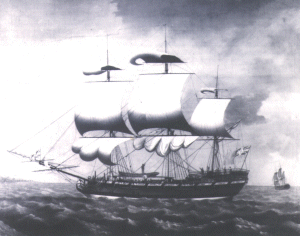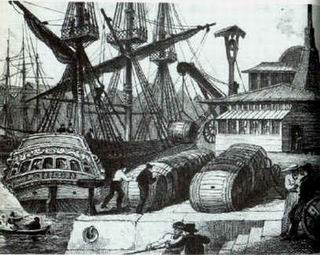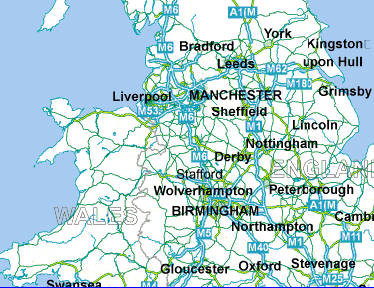Beginning of the Transatlantic slave trade in Liverpool

a Liverpool's slave ship
The British slave trade starts in the 1640s with the "Sugar Revolution" in Barbados. The growth of labour in English America makes the English to become regular participants in the trade of African slave. From 1660 to 1698 the companies which control the slave trade are based in London. From 1672 to 1698 a monopoly of the slave to Africa is instituted. This monopoly finishes in 1698. The first Liverpudlian ship involved in the slave trade leaves Liverpool in 1700 to go to African Gold Coast (Guinea).
Rise of Liverpool as a slave trade port
At the beginning of the 18th century, two ports dominate the
slave trade: London and Bristol. Until the 1740s Liverpool is not the first
port for the slave trade.
From 1700 to 1740, the number of slave ships leaving Liverpool increases steadily.
This fact is the consequences of many reasons. In Liverpool the level of wage
rate and charge are lower than the Bristol and London ones. It allows the
Liverpudlians traders to sell their African slave lower. The Liverpool is
easy to use because the facilities are improved.
In consequence larger ships can be loaded (large docks and large deep waterfront).

the loading of sugar barrels
The Liverpool's situation is quite good. Her geographical position
on the coast of Britain is ideal and much closer to the source (East Lancashire,
Yorkshire and the Midlands) of goods for African Gold Coast.
The looms, foundries and workshops in these regions produce cheap linens,
woollens, iron bars, coppers pans, glass beads, cutlery, gunpowders and muskets.

For all these reasons, Liverpool overtakes London and Bristol as the most important port involved in the slave port. By the end of the 18th century, Liverpool has over 60% of the entire British trade and 40% of the entire European slave trade.